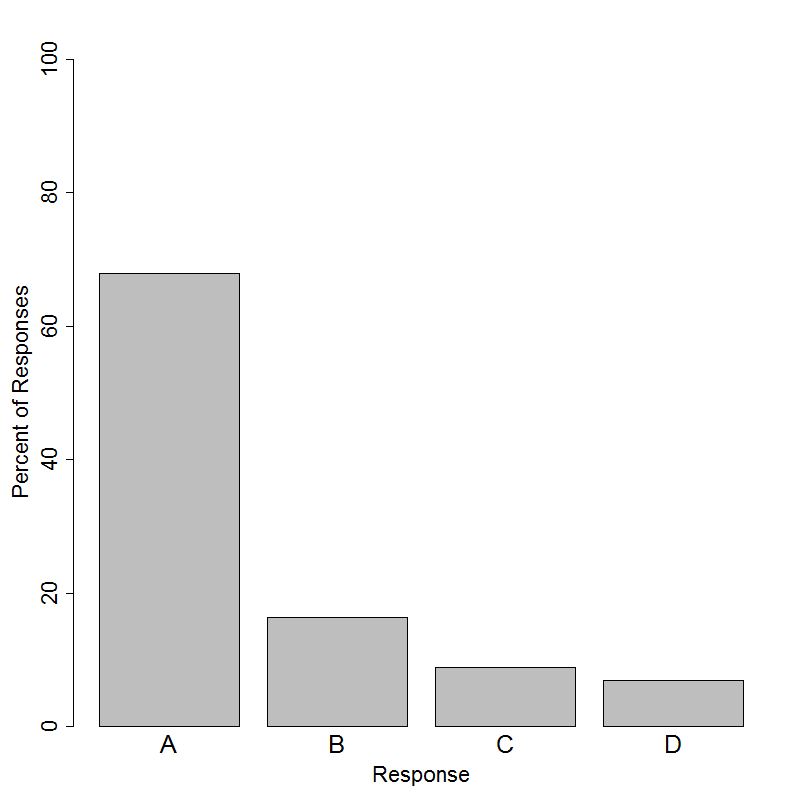A mathematics achievement test was given to students in two classes. The scores are summarized below.
| Class I | Class II | |
| Maximum | 98 | 77 |
| Upper Quartile | 89 | 72 |
| Median | 81 | 64 |
|
Lower Quartile |
53 | 45 |
| Minimum | 42 | 36 |
Which of the following is true?
(A) At least half of the scores in Class I are greater than all of the scores in Class II.
(B) Half of the scores in Class II are less than three-fourths of the scores in Class I.
(C) The interquartile range (IQR) of Class I is less than the IQR of Class II.
(D) The range of Class II is greater than the range of Class I.





The correct answer to this question is Option (A). The median is a measure of center calculated by finding the middle value in the dataset (or the average of the two middle values) when the data are ordered from least to greatest. Thus the median is the value that is greater than about 50% of the values in the data. For Class I, this means that about 50% of students in the class scored 81 or lower. Similarly, the lower quartile (Q1, also called the first quartile) and the upper quartile (Q3, also called the third quartile) are the values that are greater than 25% and 75% of the data, respectively. Comparing the two classes, we see that the highest value, the maximum, for Class II is only 77. Since all of the scores in the higher half of the Class I data are 81 or higher, Option (A) must be true.
This item assesses the ability to describe two distributions using measures of center and measures of variability. Options (A) and (B) deal with the median, the measure of center mentioned in this question. Option (B) was the most popular incorrect answer choice. While the median of Class II is less than the upper quartile of Class I, the statement is not true. If we look at the lower half of Class II and the upper three-fourths of Class I, we see that there is some overlap in the scores. Options (C) and (D) are statements about measures of variability of the two data sets. The interquartile range is 36 for Class I and 27 for Class II, so Option (C) is not true. The range for Class I is 56 and the range for Class II is 41, so Option (D) is not true.